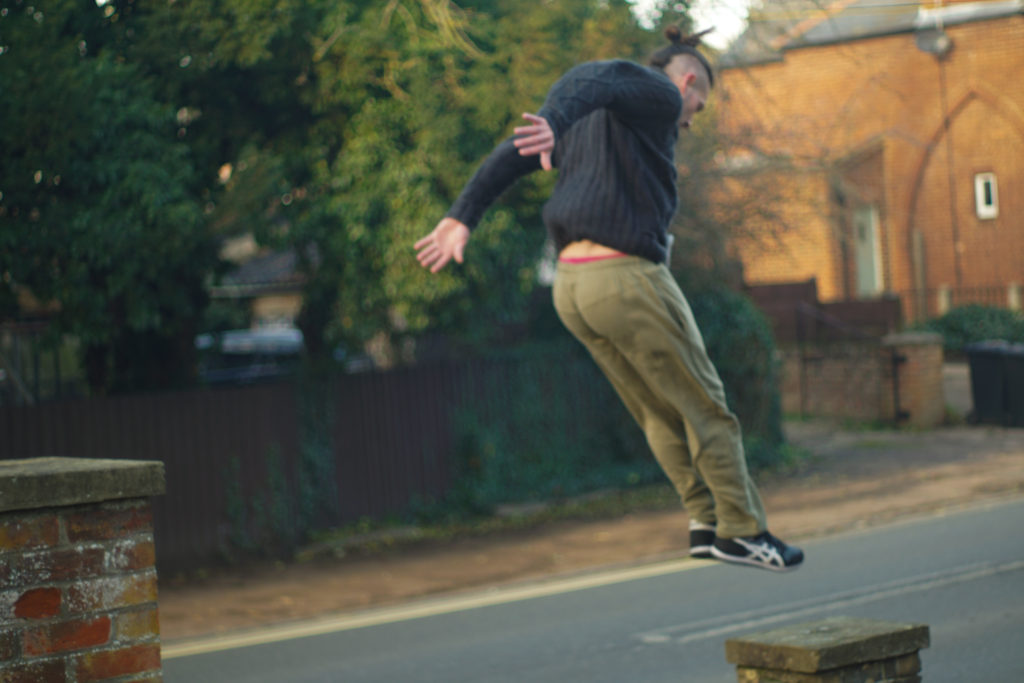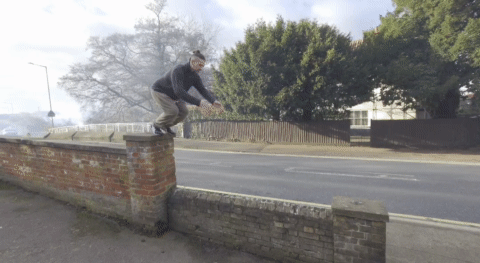Landings are a difficult concept in Parkour, and maximizing our ability to land is one of the greatest assets a Traceur can have. There might be some different opinions when it comes to what is the best method. I’m not interested in winning that popularity contest. I am interested in putting a new idea out into the world, so here goes. Slinky landings.
Recently I decided to watch a slinky falling in slow motion. This triggered a thought:
If landing was like a dropping slinky or spring, then while I’m in mid-air would my feet act like the lowest point of the slinky?
Per the video, the lowest point of a Slinky (when it’s fully stretched) doesn’t move or come under any weight of gravity until the main moving part of the slinky catches up to it. This made total sense because I always find that landings feel best when I get my feet up and ahead of me to land. That’s the epiphany, and it relates to Parkour.

What does this mean for the human body travelling through the air and Parkour landings?
In short – and theoretically – if my feet are as far away from my body towards my landing spot, they will make contact before the larger portion of my weight catches up. Feet and legs can’t outrun gravity, but they can stretch out to the landing point (like the slinky) before my mass gets there. And that creates the opportunity to cushion the landing.
Going into further detail: the centre of gravity is just under the belly button (based on the average person – we are all a little different based on proportions). This means when landing, when the legs are extended, you have a small bit of time to soften the landing. And that time extends from when your feet touch the point of landing until your centre of mass catches up to those feet. The more you can increase this time the longer you have to absorb your landing which means, at least theoretically, a softer, smoother landing.

Said in another way, this slinky concept means that your legs can act freely from the effect of gravity for a longer time if you extend them to reach out to your target. You can actually see this behaviour in most cats and mountain Ibex that have to carefully manage the control of their impact. In this way they can adjust if the surface needs it, before their full weight catches up. In Parkour, we can do the same.
Searching into the physics of a Slinky dropping has affected my movement. It has made me realise that absorbing as much of the impact of my jumps with feet stretched far ahead will give me better landings and help increase the longevity of my movement. Also, the idea of a stretched slinky is a visual that helps me realize the movement. Seeing the slinky in slow motion made me think that’s how I want my landings to be, and I want to learn more about how it works. I hope my endeavor in understanding it helps you understand the concept as well.
Additional videos.
The Ibex with their landings

A video from Parkour Science that discussing landings.


